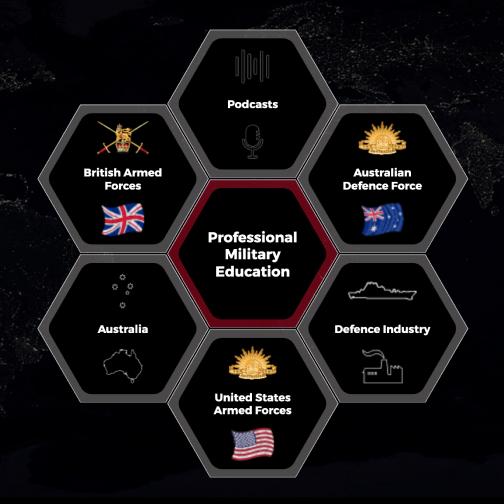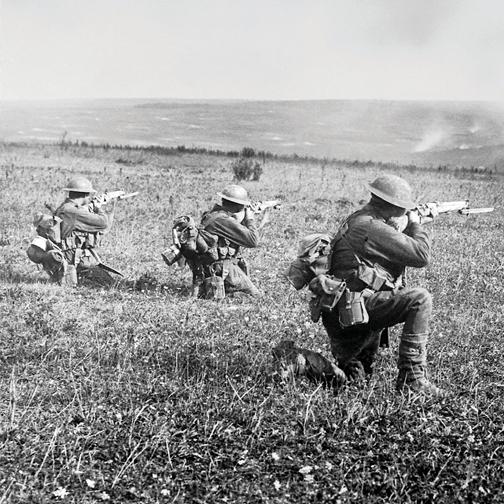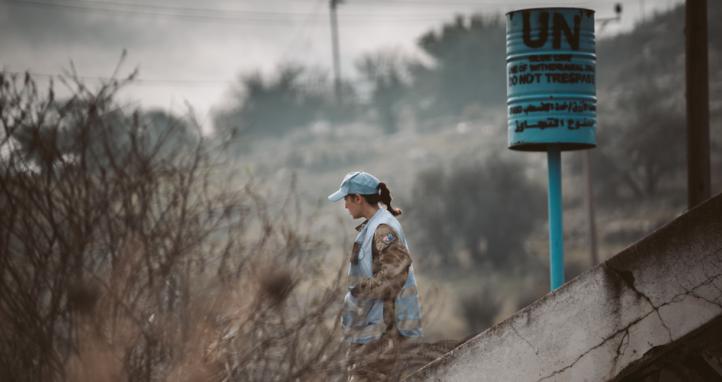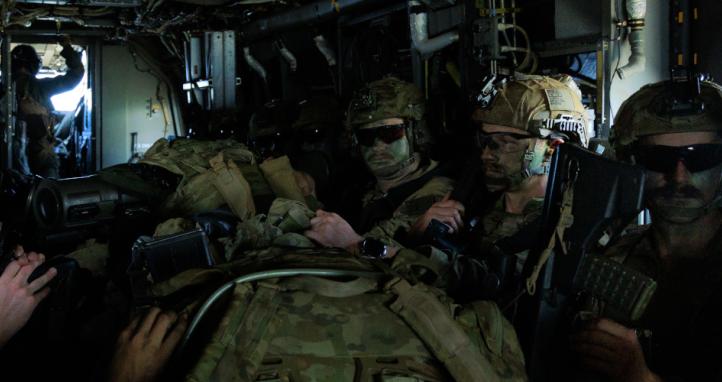The Army Reserve has been in decline for decades due to ineffective recruitment, increased training burdens, under-resourcing, and diminishing pay and conditions. In 2023, the Army Reserve was 2% smaller than in 2011, while Australia’s population grew by 17% over the same period. This decline occurred despite the demonstrated utility of the Army Reserve through significant contributions to both domestic and international operations.
The Strategic Review of the Australian Defence Force Reserves in 2024 highlighted some of the challenges facing the Army Reserve. However, the terms of reference for the review only included Navy, Army and Air Force, preventing the authors from fully exploring the factors contributing to the decline in the Army Reserve.
The decline in the Army Reserve is most apparent in regional Australia. Poor recruitment and retention have caused larger towns’ Army Reserve units to shrink from company or squadron size in the 1990s to the point where they now struggle to provide a platoon or troop-sized force. Although many of the same recruiting and retention challenges are also affecting metropolitan areas, stronger population growth is concealing these issues. The state of recruitment and retention in regional Australia offers insight into the overall health of recruiting and retention in the Army Reserve – it acts as a canary in the coal mine.
If the ADF continues to make service in the Army Reserve accessible to only an increasingly smaller portion of the Australian population, it will fail to provide the capabilities required by the Government. It will also miss the opportunity to realise the numerous benefits offered by an effective Army Reserve.
Why invest in the Army Reserve
Reserve forces provide a cost-effective means of preparing for competition, conflict, and crisis. Full-time personnel are more expensive than reservists. Additionally, full-time forces incur economic costs due to the withdrawal of labour from the productive, income–producing, segment of any nation’s workforce. Even nations facing immediate threats to national security employ reserve forces to ensure the necessary mass in their military to respond to aggression. Israel, Finland, and Taiwan exemplify the deployment of reserve forces at high levels of readiness.
A strong Army Reserve in regional Australia bolsters other Defence and Commonwealth Government objectives. For Defence, the Army Reserve fosters a connection to the community, creating a supportive environment for training and domestic operations. This community link also aids recruitment for the Regular Army. Defence jobs in the regions stimulate economic activity, promote social mobility, and encourage more people to consider relocating from capital cities to regional areas, helping to alleviate the housing crisis. Meaningful and rewarding roles in the Army Reserve offer opportunities to keep former Regular personnel connected to the Defence organisation.
Excluding the 30% of Australians who live in regional Australia from part-time service is clearly unacceptable for the ADF. At the same time, the geographic dispersion of the Army Reserve increases the cost of the capabilities it provides, both in terms of estate maintenance and personnel travel. Therefore, the ADF should aim to maximise the capability it generates in regional Australia while minimising associated costs. Ring-fencing estate and travel expenditures (similar to a Community Service Obligation for other government functions, such as Telstra’s Universal Service Obligation) would offer greater transparency for government policy decision-makers.
Depot closures may be necessary, but only where population density is unlikely to provide a viable force element – nominally platoon/troop size – for local command and control. However, many locations where the Army has struggled to maintain such a workforce are not in decline. For instance, the population of Tamworth in NSW has grown from 52,000 in 1990 to 63,500 in 2021; during that same period, the personnel attending the local depot dropped from over 100 to less than 30. Closing depots should only occur as part of a focused effort to boost recruiting and retention in regional Australia. Locations like Tamworth illustrate that the Army has created the recruiting and retention issue; it is not a function of changes in population demographics.
Causes of the Decline in Regional Australia
Some regional locations are not large enough to sustain a viable Army Reserve establishment. In many other areas, the decline in Army Reserve recruiting and retention is due to decisions made by the ADF. Reservists have experienced an erosion of their conditions of service, reduced access to equipment, and increasing demands on their time. While these issues apply broadly to the Army Reserve, the impact is most pronounced in regional areas.
Reserve conditions of service have gone backwards compared to the broader Australian workforce and Regular personnel. Reservists have not benefited from increases in employer super contributions enjoyed by every other employee in Australia. The removal of the attendance allowance negatively impacted many Reservists, and the Annual Health Allowance has remained at $600 per year since it was introduced in May 2006. Even allowing for tax, young people can now earn more in unskilled weekend work in the private sector.
The demands on Reservists' time have increased. Each year, additional training requirements are introduced, with many courses to be completed individually online. More administration tasks have become individual responsibilities, requiring soldiers to perform record keeping, travel bookings, and financial acquittals (but not before they have completed the obligatory online training). Organisational hollowness across the Army means fewer people are expected to handle a growing workload – including administration, operational tasks, supporting and delivering training, individual qualifications, and preparedness exercises. Time is the most precious resource for generating capability within the Army Reserve.
Rightly or wrongly, Reserve units are at the back of the queue for resource allocation. This has left these units with rundown facilities, a shortage of military (‘Green Fleet’) vehicles and weapons, and insufficient resources to achieve and maintain warfighting proficiencies. Part of the value proposition of joining the Army Reserve is to do military training with military equipment. Online individual training does not attract or retain people who are considering the benefits of using their time for family, civilian employment, business, or further study.
Reversing the Trend
Addressing the issues in regional Australia will enhance overall recruitment and retention, as well as create various other benefits for the broader ADF and community. The solutions are straightforward and not particularly costly when considering the return on investment. However, these solutions require a shift in mindset.
The current arrangements for Reserve service stem from the Regular Army arrangements rather than from a deliberate consideration of how to generate capability from the Reserve. For example:
- Daily rates of pay for Reservists are calculated by dividing Regular annual rates of pay by 365 instead of a deliberate work value assessment or comparison to the broader labour market.
- Reserve training courses are scheduled around access to facilities when not required for Regular personnel, resulting in many Reserve courses being run during school holidays, when families and/or civilian employers have competing needs for Reservists’ time.
- Recruiters will push people seeking to join the Reserves towards high-priority full-time roles.
While many of these decisions may appear reasonable, collectively, they render service in the Reserves less appealing and more difficult for a wider range of people to undertake.
There is potential to overlook the survivor bias in the current Army Reserve. Changes must consider the existing workforce and the individuals the Army has struggled to attract and retain. The Army must develop a value proposition that has broader appeal, is more competitive, and is more attainable. Training requirements must be tailored to the availability and capacity of a larger cohort of people, including students, parents in young families, business owners, private sector employees, and former Regular Army personnel.
Specific Improvement Opportunities
Provide soldiers with appropriate military equipment. Reducing military assets within the Army Reserve has left numerous regional locations without significant platforms. Access to military equipment influences the time Reserve soldiers are willing to commit to the Army over civilian employment and family obligations. Soldiers express this clearly in leadership engagements and attitudinal surveys; providing more and higher-quality military equipment directly impacts retention.
Properly maintain Reserve workplaces. The poor condition of estates and infrastructure for Reserve units is most evident at regional depots. These workplaces should have an asset management plan to ensure they are painted and that carpets are replaced at least every 10 years. They should also have computer rooms with fast and reliable Defence Protected Network (DPN) access in an environment that reflects Army values and the time soldiers dedicate to Defence service.
Increase the use of simulation. Greater DPN access provides more opportunities to utilise simulation. Recent acquisitions of non-lethal training aids (for instance, airsoft rifles) and portable Weapons Training Simulation Systems (WTSS) have the potential to significantly enhance both training and soldier experience in regional depots. The allocation of these systems must better align with regional requirements. Improved coordination and management in metropolitan areas would free up equipment for soldiers at regional depots.
Provide for different patterns of service. Weekend and Tuesday night training can be very inefficient when travel is involved. The 2nd (Australian) Division has trialled other service patterns, most notably accelerated ab initio training and nine-day blocks. Other options include modularised and hybrid (face-to-face and online) training. The Ready Reserve scheme of the 1990s demonstrated how different service patterns can make Reserve service more appealing and achievable for particular population demographics. Offering various service patterns will enhance the level of capability that can be delivered from regional Australia.
Conclusion
The inability of Defence to attract and retain Reserve personnel in regional Australia serves as a canary in the coal mine, signalling alarm about underlying issues within the recruiting and retention systems.
Simply directing the 2nd (Australian) Division to tackle recruiting and retention issues will not be effective. This is because fundamental change is necessary in resource allocation, training design, access to training facilities, recruiting priorities, and conditions of service; these factors are largely beyond the control of the 2nd (Australian) Division.
The ADF and Government should anticipate that the Army Reserve will deliver credible Defence capabilities. It is therefore entirely reasonable for these capabilities to be clearly articulated and linked to measurable outcomes, including in relation to recruiting and retention based on population demographics in regional Australia. Only then can we expect to see the organisational alignment necessary to effect change.










A friend’s young son has been in the application process for Army Reserve now for a year, and has been told to wait another six months because in the meantime he’s got a couple of speeding tickets. He is of course expected to maintain his enthusiasm and commitment to Army over that time.
If we want young people to join we need to grab them from their first expression of interest and treat them like a prospect. Keep them interested and excited. We can’t do that with 9-18 month recruitment processes and the air gap between the applicant and the units they want to join.
This article highlights some of the issues in appropriately respectful terms. I’d suggest we also need some forthright assessments from the SNCOs who’ve experienced the changes over the years to seek their practical wisdom in words only they can express.
I would suggest also that there may be a 'snowball effect' when numbers of parading members drops to a certain point in any given location, those remaining gain less satisfaction from their service as the administrative and governance burden on those few increases and the quality of training opportunities decreases, added to a decrease in comradery or esprit de corps.
I would add that by overlooking or neglecting regional areas Defence is potentially missing out on members with a more diverse skill set than may be readily available in metropolitan regions.